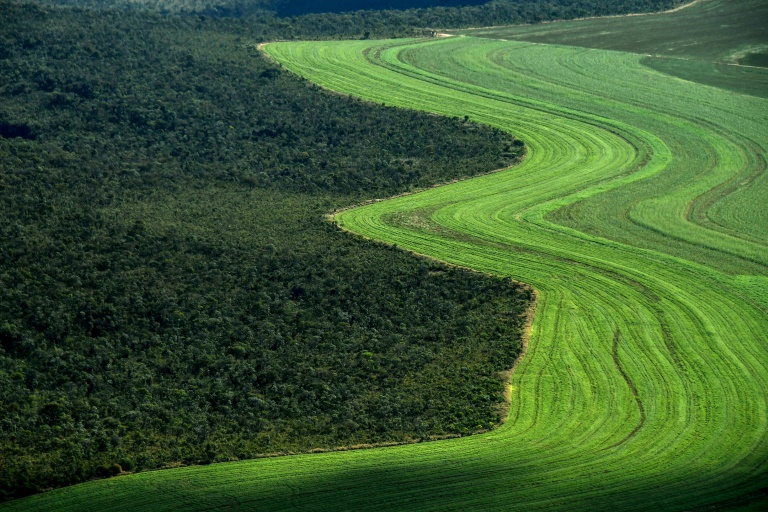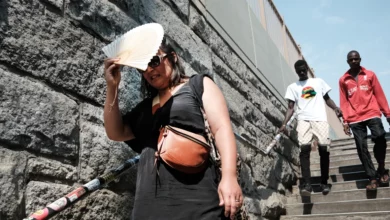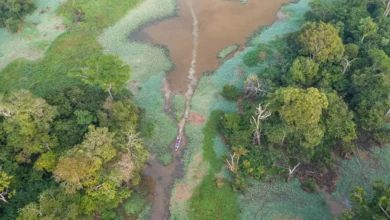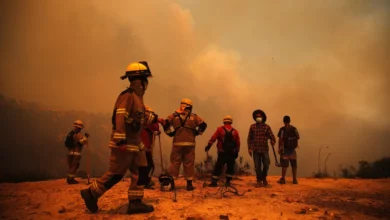
As the pivotal COP26 climate conference nears, there is a sense of betrayal within the climate movement that setting more targets is becoming futile. The Paris climate agreement not only lacks ambition, but commitments are simply not being met. Fossil fuel companies meanwhile have been able to maintain business as usual, even if some have set net-zero emission targets for 2050.
Communities on the front line of climate change, and of fossil fuel pollution, feel that they have been left with little choice but to sue the polluters in court.
Following the landmark judgment against Shell in May that forced the fossil fuel giant to cut emissions by 45% by 2030, a tidal wave of climate litigation is set to crash on courts globally.
Today’s launch of the #SeeYouInCourt campaign by the International Federation for Human Rights (FIDH) — a federation of 192 human rights groups in more than 100 countries — is part of a coordinated litigation action against polluting corporations.
Chilean NGO Observatorio Ciudadano and two other organizations are filing a protection action against climate impacts and incidents of massive intoxication caused by coal-fired power plants owned by AES Gener (now AES Andes).
In Colombia, CAJAR, a human rights organization, is working alongside a group of local communities to file a complaint with the Inter-American Commission on Human Rights regarding the diverting of the Arroyo Bruno River — part of a plan to expand the largest open-pit coal mine in Latin America, the Carbones del Cerrejon.
“Today is a day that many companies will remember. Those who violate human rights, deface the planet, and aggravate climate change now have a special place waiting for them: the courts,” said Jose Aylwin, director of Observatorio Ciudadano, which is an FIDH member organization.
These cases have emerged from grassroots communities who are seeking recourse in the courts because of the failure of environmental authorities to adequately control emissions.
“Multinationals play a major role in climate change, but this role does not correspond with any form of accountability for the harm done,” said Clemence Bectarte, an attorney who is coordinating the FIDH Litigation Action Group.
Environmental litigation takes climate focus
Conservationists have long used the courts to stop environmentally harmful fossil fuel projects that impact water and air quality. Just this week, the European Court of Justice fined Poland €500,000 ($586,000) a day in response to the country’s refusal to shut down the Turow open-cast lignite mine near the Czech border on pollution grounds.
But the latest wave of climate litigation cases are different in that they do not rely on existing biodiversity legislation or air quality legislation. They instead “place climate change at the very heart of the case,” explained Catherine Higham, a policy analyst and coordinator of the Climate Change Laws of the World project at the London-based Grantham Research Institute on Climate Change and the Environment.
Higham also co-authored the Global Trends in Climate Change Litigation: 2021 Snapshot report, which found that the number of climate change-related cases has more than doubled since 2015 — about 800 cases were filed between 1986 and 2014; over 1,000 cases have been brought in the six years since.
Underlining the quest to set new precedents in climate litigation is the consolidation of climate science, and “the now well-established connection between climate change and human rights,” noted Higham.
Fighting climate litigation on the basis of human rights
Proving the negative impact of the climate crisis on human rights has been key in an increasing number of high-profile environmental lawsuits.
In a landmark 2019 case, the Dutch Supreme Court cited the European Convention on Human Rights when it ruled in favor of the Urgenda Foundation environmental group and 900 citizens while ordering the Dutch government to reduce its greenhouse emissions by at least 25% by the end of 2020.
Meanwhile, the young people who will be marching globally on Friday for the latest climate strike have successfully initiated climate litigation on the basis of their human rights.
A high court told Australia’s Environment Ministry that it owes a duty of care to Australian children who could suffer potential “catastrophic harm” from approving an extension to a coal mine. So too in Germany, young people successfully argued in the Constitutional Court in April that federal climate law was insufficient to protect their future and therefore unconstitutional — the court forced Germany to increase its 2030 emission reduction targets as a result.
This month, teenagers and young adults, in coordination with youth climate activists Fridays for Future, are going back to the Constitutional Court to challenge the climate policy of five German states that do not have a climate protection law.
So, too, in the cases being filed today in Chile and Colombia, the lived experience of individuals and communities and their “right to a healthy environment” is central to the claimaints’ strategy, Bectarte reiterated.
“We need to provide a human rights lens in the fight for corporate accountability for climate change,” she said. “It’s not only the planet being impacted but also communities.”
Following today’s launch, the #SeeYouInCourt campaign will continue to “place affected communities” at the center of planned litigation in Asia, Africa and Europe, Bectarte added.
Big Oil using courts to limit climate action
Climate litigation remains a double-edged sword, however, as fossil fuel companies also go to court to block climate action, or to be compensated for coal phaseouts — as occurred when German energy giant RWE sued the Netherlands for €1.4 billion in February.
But such “anti-climate” lawsuits may struggle to be an equal counterweight to a rising wave of activist climate litigation.
The European Court of Justice (ECJ) decided last month that EU energy companies can no longer sue EU governments using the Energy Charter Treaty (ECT), via which RWE sued the Netherlands for its coal phaseout by 2030.
Though the impact of the decision is yet to play out in the courts, these lawsuits will be more difficult to prosecute, says Paul de Clerck, economic justice coordinator for Friends of the Earth Europe.
“It seems that the recent ECJ ruling will only provide more ammunition to countries to no longer accept ISDS cases based on the ECT,” he said, referring to the Investor-State Dispute Settlement arbitration tribunals, which could potentially protect €345 billion worth of fossil fuel infrastructure in Europe.
But arbitration settlements outside the EU will still be prosecuted by Big Oil. “The problem remains that arbitration panels outside the EU continue to ignore all of this and just go on making their rulings,” De Clerck said.
Climate litigants tipped for more success
The Grantham Research Institute report on climate change litigation notes that 58% of the cases brought against companies and governments, excluding in the US, had outcomes favorable to climate change action. Only 32 percent had unfavorable outcomes.
Higham expects this success to continue. “The broad trend towards favorable outcomes for the climate in judicial proceedings is one that I would expect to continue to grow in the coming years as the scientific and political consensus around the urgent need for climate action continues to grow.”
She added that increasing evidence of extreme climate impacts, such as the recent global wildfires and flooding, will only strengthen the hand of litigants desperate to prevent catastrophic global heating.




